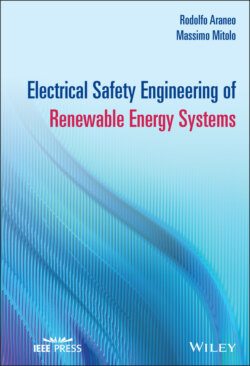Читать книгу Electrical Safety Engineering of Renewable Energy Systems - Rodolfo Araneo - Страница 12
1.1 Introduction
ОглавлениеThe renewable energy sector has been rapidly growing in the past decade [1–3], and so has been the number of accidents involving workers in “green” projects. Statistics in the United States reveal that injuries and death are caused by lack of safety training and safety procedures [4]. The Electric hazard, but also Falls, Struck by and Caught in between hazards, are always present during all photovoltaic, solar thermal, and wind tower construction projects, regardless of the magnitude of the job.
The culture of the safety-by-design [5, 6] seems to be the appropriate response to the increased risk offered by renewable energy systems (RES). RES may challenge the safety of workers because they are generally always live, and the system voltage may exceed 500 V d.c.1
In addition to safety training and procedures, electrical safety may be conveyed through engineering measures that reduce the risk of electric shock below a threshold that is conventionally deemed acceptable by applicable standards. In fault-free conditions, the basic protection ensures that persons cannot come into contact with parts normally live (i.e., proper insulation of electrical components). In the case of failure of the basic insulation of components, the fault protection ensures defense against electric shock by automatic interruption of the fault current. In some scenarios, the fault protection may be obtained with alternative methods to the fault current interruption.
In general, the safety-by-design of RES [7] is achieved if hazardous energized parts are never accessible, and that equipment/appliances, also referred to as exposed-conductive-parts (ECPs), are never hazardous either under normal operations or in the event of single-faults. In essence, touch voltages and contact durations must be within the magnitudes deemed safe by applicable technical standards and codes.
